A brick kitchen island can be a stunning addition to any kitchen, bringing in a rustic, warm, and grounded aesthetic that enhances the overall look and feel of the space. Brick, with its earthy tones and natural texture, offers a distinctive charm that many other materials simply can’t replicate. This choice is particularly popular in farmhouse-style kitchens, but it’s also versatile enough to blend with modern, industrial, or eclectic designs. A brick island becomes a focal point, drawing the eye and providing a bold contrast to sleeker countertops or cabinetry. It’s a design choice that feels both timeless and full of character, lending a sense of warmth and heritage to the kitchen.
The durability of brick is one of its greatest assets, making it a perfect material for a high-traffic area like a kitchen island. Brick is inherently sturdy and resistant to wear, which makes it an excellent option for a space that sees daily use. Unlike wood or laminate, brick doesn’t scratch or dent easily, so it will maintain its appearance even with constant activity. Additionally, brick is fire-resistant, adding a layer of safety, especially in a kitchen setting. The durability factor makes a brick kitchen island a long-lasting investment, and when properly maintained, it can last for decades without losing its appeal or functionality.
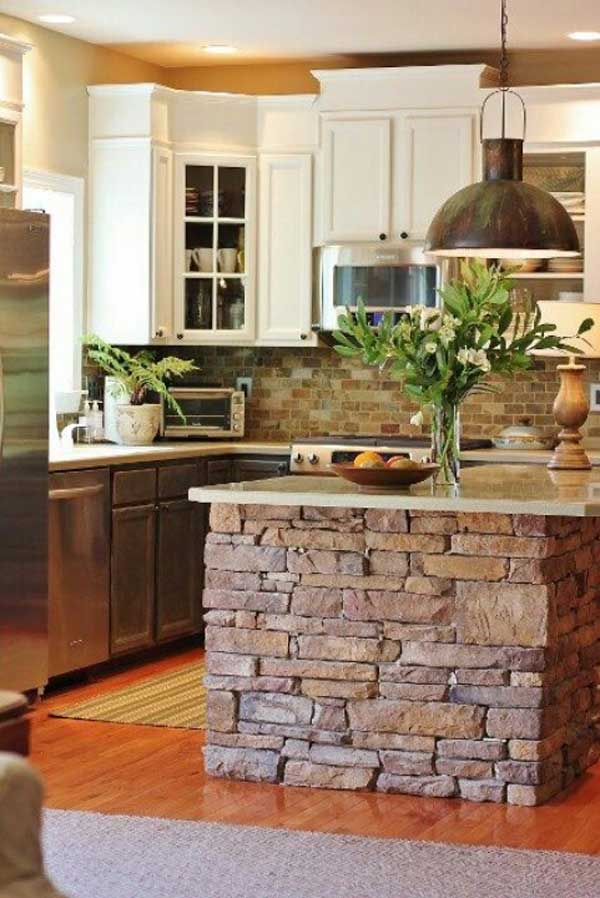
Design flexibility is another benefit of a brick kitchen island. While classic red brick offers a traditional look, there are also other options, such as whitewashed brick, gray brick, or reclaimed brick, which can bring a more modern or rustic vibe to the space. Whitewashed brick, for example, offers a softer and lighter look that complements modern farmhouse and Scandinavian styles. Reclaimed brick, on the other hand, brings in unique color variations and textures, adding a sense of history and character to the kitchen. These choices allow homeowners to customize their kitchen island to match their unique style preferences while still benefiting from the rustic appeal of brick.
Brick kitchen islands also offer design versatility when it comes to shape and size. Brick allows for unique island shapes, from simple rectangular forms to more elaborate designs, including curved or L-shaped islands. In open floor plans, a brick island can serve as a natural divider between the kitchen and other spaces, such as the living room or dining area. For those who entertain frequently, a larger island with seating can act as a casual dining or gathering spot, making the kitchen a more social space. Additionally, some homeowners opt to add features like a built-in wine rack, shelves, or open storage within the brick island, adding both functionality and visual interest.
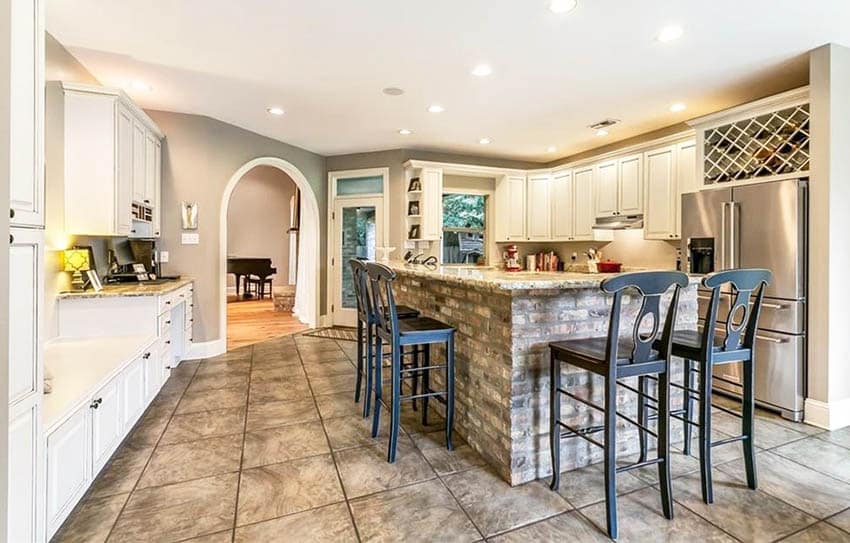
Another appealing aspect of a brick kitchen island is its potential to introduce texture into the kitchen design. Brick has a rough, tactile surface that contrasts beautifully with smoother materials like polished granite, marble, or stainless steel. This contrast can add depth and dimension to the kitchen, making it feel more dynamic and visually interesting. Incorporating different textures is a key element of good design, as it helps create a balanced and inviting space. A brick island achieves this effortlessly, combining warmth and texture that softens the often sterile feel of modern kitchens.
A brick kitchen island can also enhance the warmth and coziness of a kitchen. Brick’s natural, earthy tones bring warmth that can be particularly inviting in larger or more open kitchen spaces. This warmth can help counterbalance the coldness of stainless steel appliances or cooler-toned cabinetry, creating a more welcoming and comfortable environment. For those who love to cook and spend time in the kitchen, a cozy, warm kitchen is highly desirable. The rustic charm of brick can make the kitchen feel like the heart of the home, encouraging family gatherings and fostering a sense of comfort.
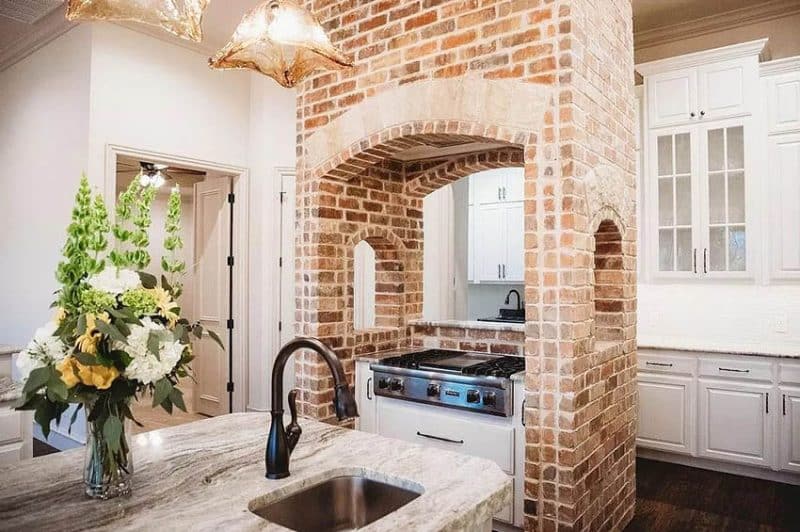
In terms of color, a brick kitchen island offers numerous possibilities. While red is the traditional color associated with brick, painting or whitewashing the brick can completely transform its appearance. Whitewashed brick is popular in modern farmhouse kitchens, offering a brighter and more neutral palette that complements other light and airy elements in the space. Painted brick in shades like charcoal, navy, or black can lend a sleek, industrial look, perfect for contemporary kitchens. These colors can either contrast with or complement other elements in the kitchen, allowing homeowners to achieve a balanced and cohesive design.
One potential consideration when choosing a brick kitchen island is the weight of the material. Brick is a heavy material, so it’s essential to ensure that the floor structure beneath the island is capable of supporting the additional load. In some cases, additional floor reinforcement may be necessary, particularly in older homes.
Consulting a professional during the planning and installation process can help address any structural concerns, ensuring that the island is both safe and durable. This initial consideration is important for long-term satisfaction and peace of mind, as the weight of the brick adds stability and strength to the overall structure.

Maintenance is another factor to consider with a brick kitchen island. While brick is generally low-maintenance, it is a porous material and can be prone to stains or discoloration if not properly sealed. Sealing the brick can prevent stains from spills and make it easier to clean. Regular cleaning with a damp cloth or gentle cleaner is usually enough to keep it looking fresh. In addition, the grout lines between bricks may require periodic maintenance to prevent dirt buildup, ensuring the island stays in top shape. With minimal upkeep, a brick kitchen island can retain its appearance and functionality for years.
Another interesting feature of a brick kitchen island is its adaptability to different countertop materials. Brick pairs beautifully with a variety of countertop surfaces, including wood, quartz, granite, or concrete. A wooden countertop, for example, enhances the rustic appeal of a brick island, creating a cozy farmhouse aesthetic. Quartz or granite can lend a modern touch, balancing the roughness of the brick with a smooth and polished surface. Concrete, with its industrial feel, also complements brick well, resulting in an edgy, contemporary look. The choice of countertop material can significantly influence the overall style and feel of the island.
Energy efficiency is another benefit of a brick kitchen island. Brick naturally retains heat, which can be an advantage in a kitchen. For those who live in colder climates, a brick island can absorb warmth during cooking and gradually release it, helping to maintain a comfortable temperature in the kitchen. This characteristic of brick can make the kitchen feel cozier, especially in winter months. Additionally, brick is also an eco-friendly choice, as it’s made from natural materials that can be recycled, making it a sustainable option for environmentally conscious homeowners.

Common Mistakes to Avoid:
Ignoring Structural Requirements: Brick is heavy, so it’s crucial to ensure the floor can support the additional weight. Neglecting structural considerations can lead to long-term issues.
Not Sealing the Brick: Unsealed brick is prone to stains and discoloration. Sealing the brick can protect it and make cleaning much easier.
Choosing the Wrong Countertop: Not all countertop materials complement brick. Choosing a countertop that doesn’t suit the style of the brick can disrupt the overall aesthetic of the kitchen.
Overlooking Lighting Needs: Brick can absorb light, making the kitchen appear darker. Adequate lighting around the island is essential to maintain a balanced look.
Poor Color Coordination: Mismatched colors between the brick island and the rest of the kitchen can create a disjointed appearance.
Ignoring Maintenance of Grout Lines: Brick grout lines can accumulate dirt over time. Regular cleaning and maintenance of grout lines help keep the island looking fresh and clean.

What are the benefits of a brick kitchen island?
A brick kitchen island brings warmth, texture, and character to the kitchen, creating a cozy and inviting space. Its durability makes it resistant to wear, and it complements a wide range of design styles, from rustic to modern. Brick’s earthy tones and texture can contrast beautifully with smoother materials, making it a versatile choice for various kitchen aesthetics.
Is brick a durable material for a kitchen island?
Yes, brick is incredibly durable and can withstand heavy daily use. It’s resistant to scratches, dents, and heat, which makes it a practical choice for a kitchen island. Additionally, brick is fire-resistant, adding an extra layer of safety. When properly maintained, a brick kitchen island can last for decades.
Does a brick kitchen island require a lot of maintenance?
Brick is relatively low-maintenance, but it does benefit from periodic cleaning and sealing. Sealing the brick can prevent stains and make it easier to clean. Grout lines may require occasional cleaning to prevent dirt buildup. With minimal upkeep, a brick kitchen island can retain its appeal for years.

Can I customize the color of a brick kitchen island?
Yes, a brick kitchen island can be customized through painting or whitewashing. Whitewashed brick offers a softer look, while painted brick in darker colors can create a modern, industrial style. Customizing the color allows homeowners to align the island with the kitchen’s overall aesthetic.
Are there specific countertop materials that pair well with brick?
Brick pairs well with various countertop materials, including wood, quartz, granite, and concrete. Wooden countertops enhance the rustic appeal, while quartz or granite provide a polished contrast. Concrete can create an industrial look, making brick islands adaptable to different design styles.
Is a brick kitchen island energy efficient?
Brick is energy efficient due to its natural heat retention properties. It can absorb warmth during cooking and release it gradually, which can be beneficial in colder climates. Brick’s energy efficiency, along with its durability, makes it a practical choice for homeowners looking for a functional and stylish kitchen island.
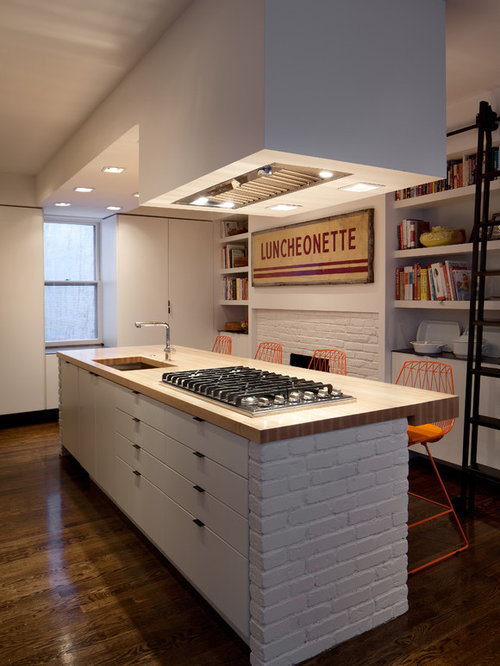
Traditional Kitchen with White Cabinets and Brick Walls
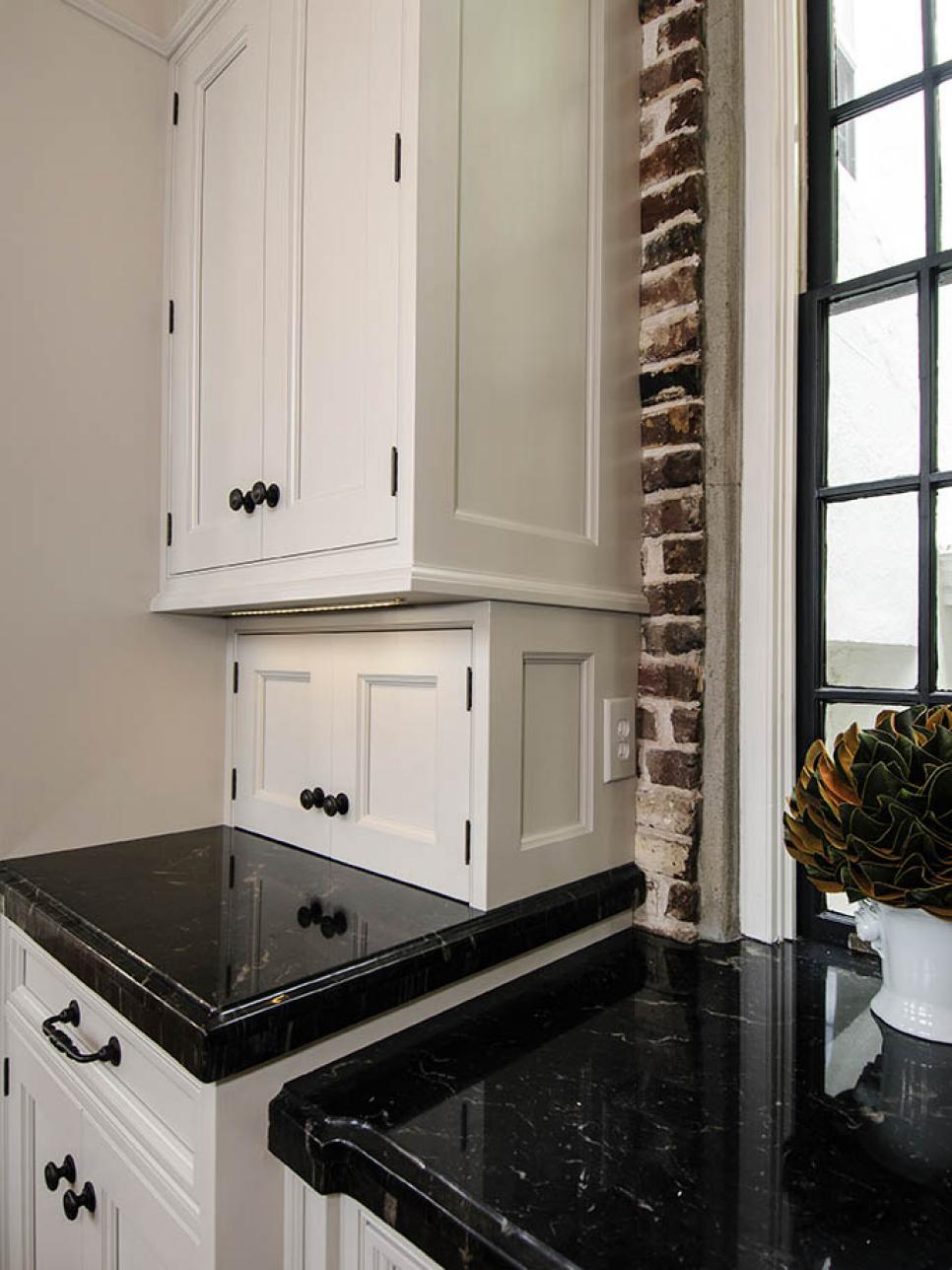
Unique Kitchen Backsplash Ideas You Need to Know About
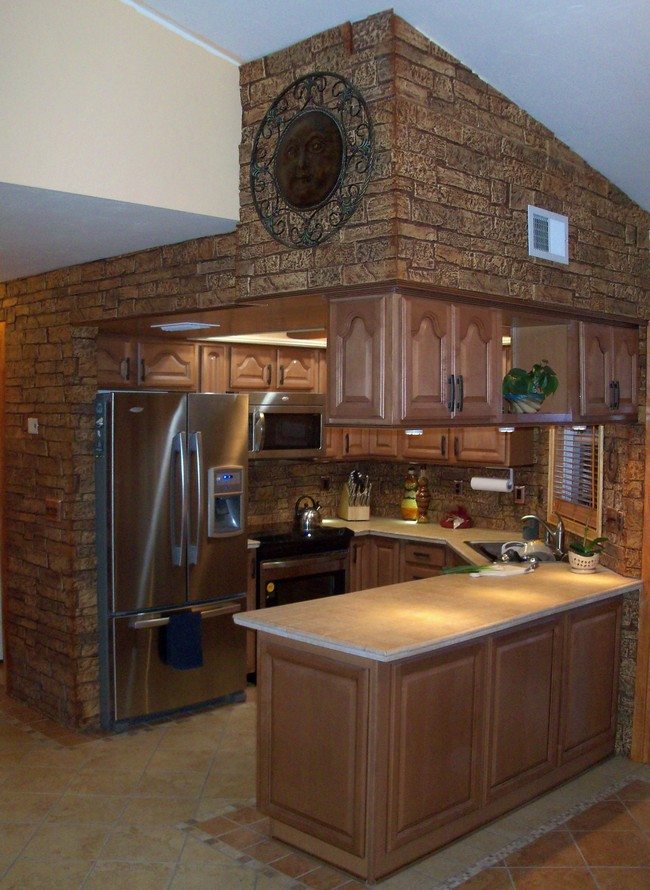
Modern Kitchen Decor with Brick Walls
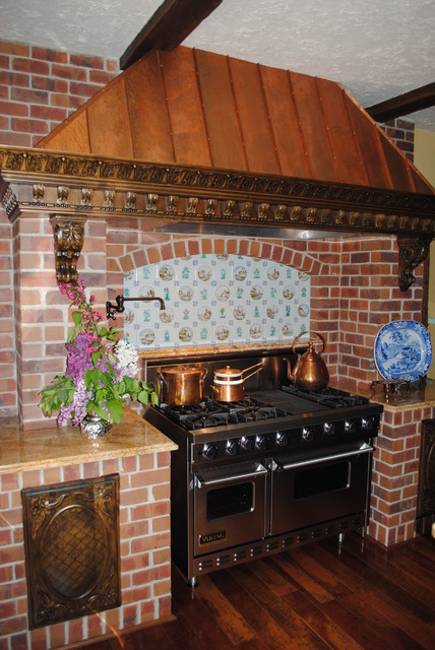
Black distressed chalk paint kitchen island Black kitchens

Kitchen Backsplash Designs, Ideas Design Trends
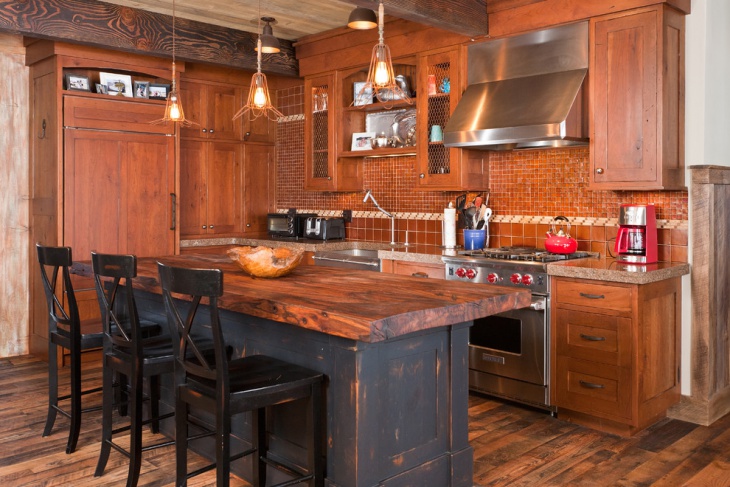
Related Posts: